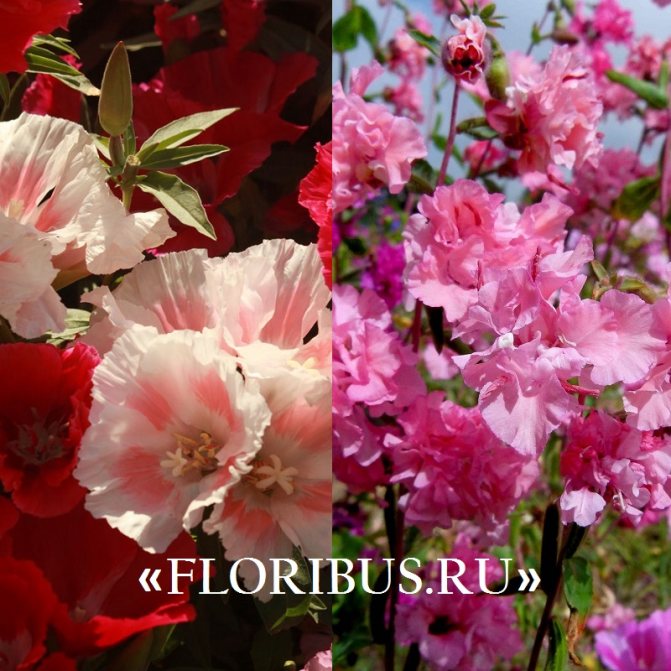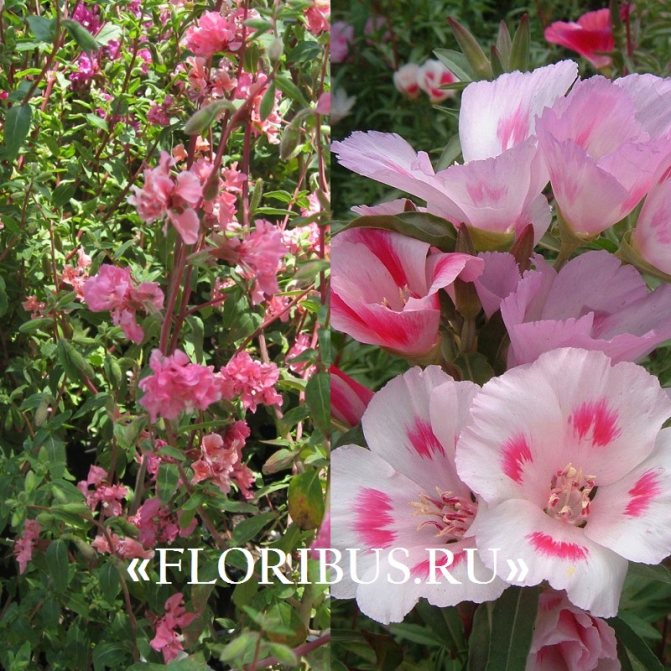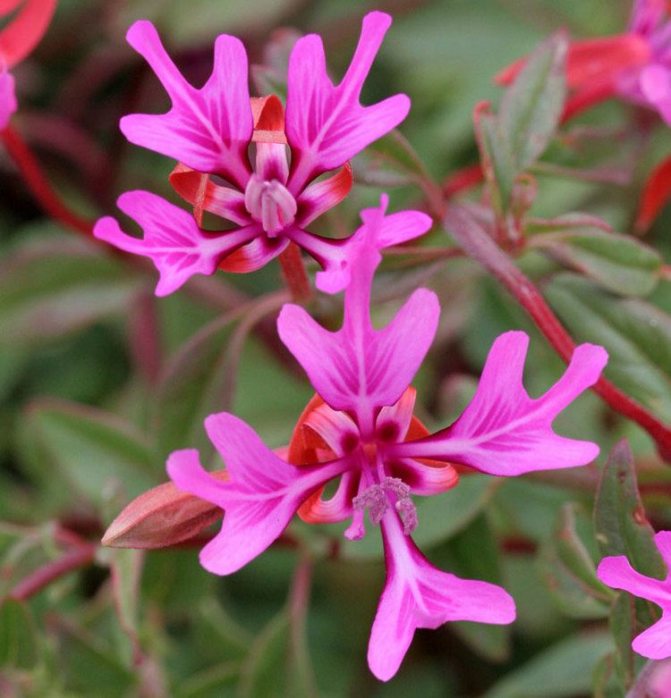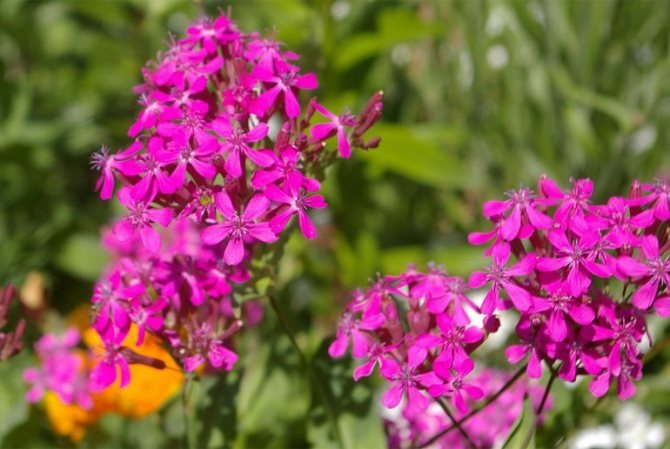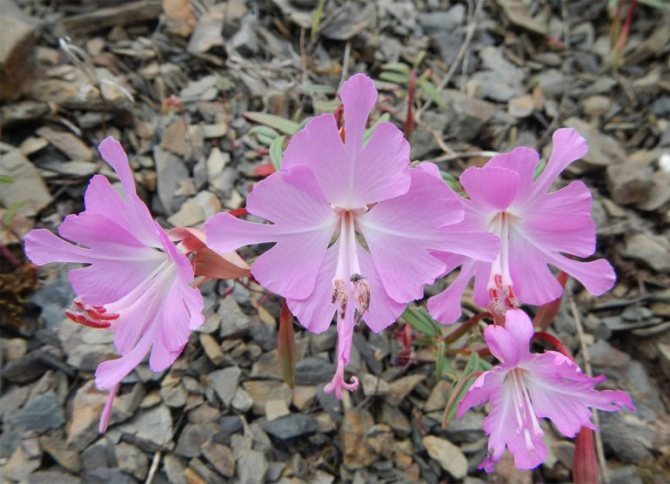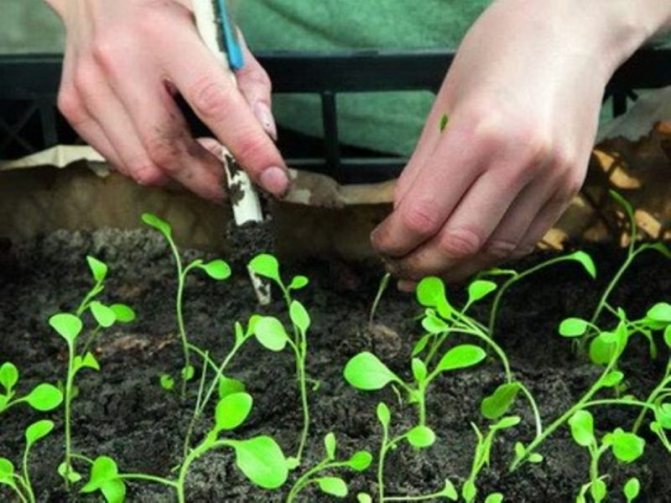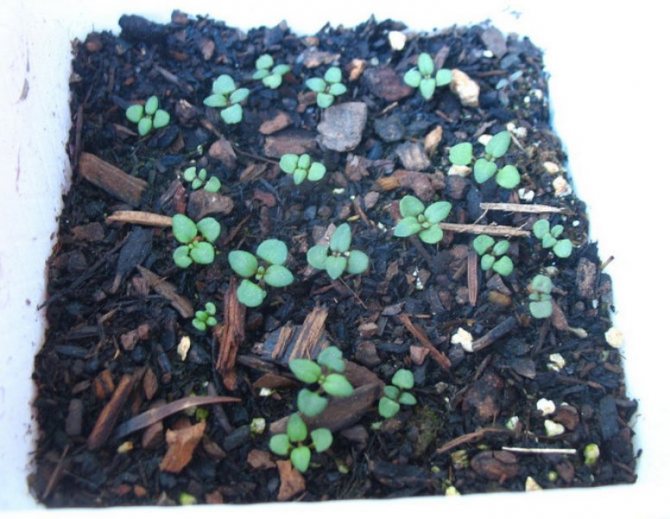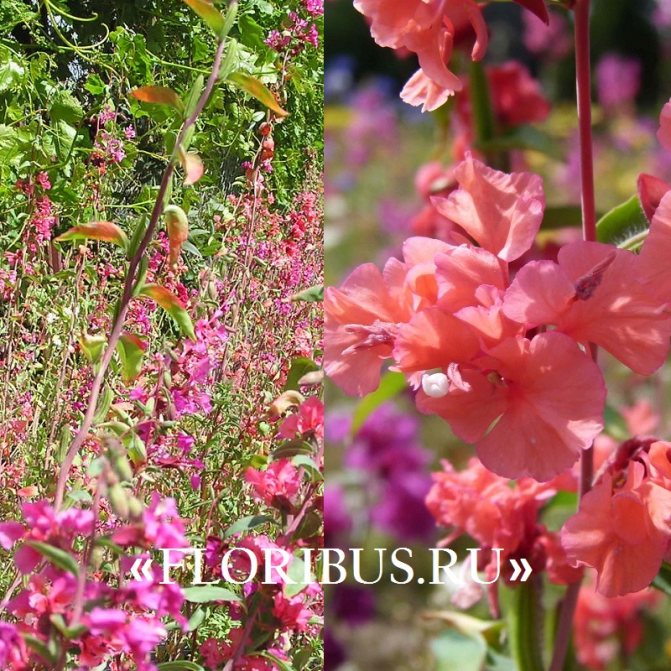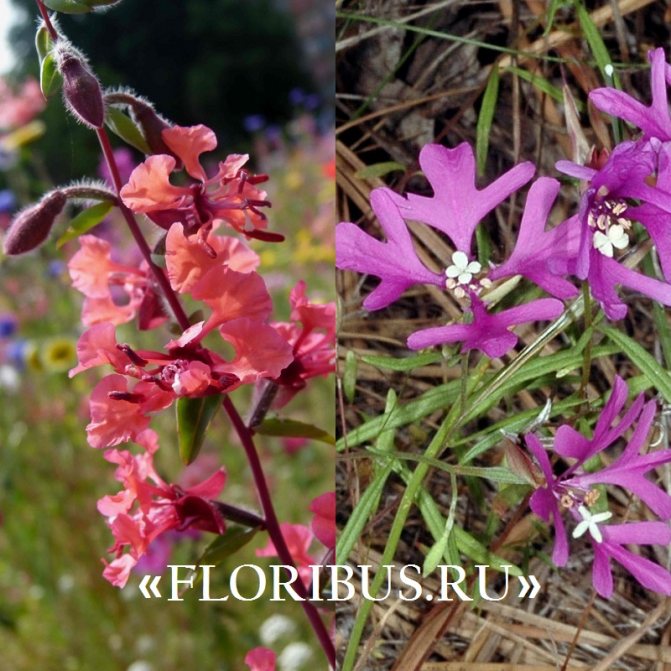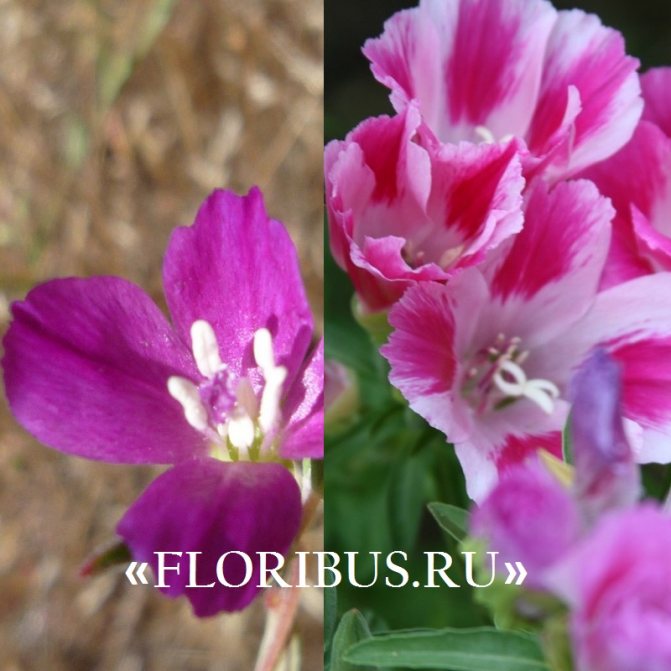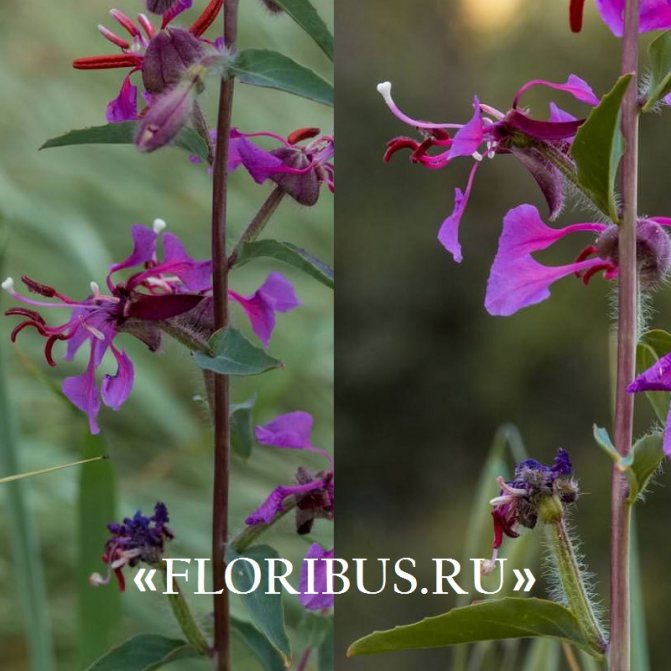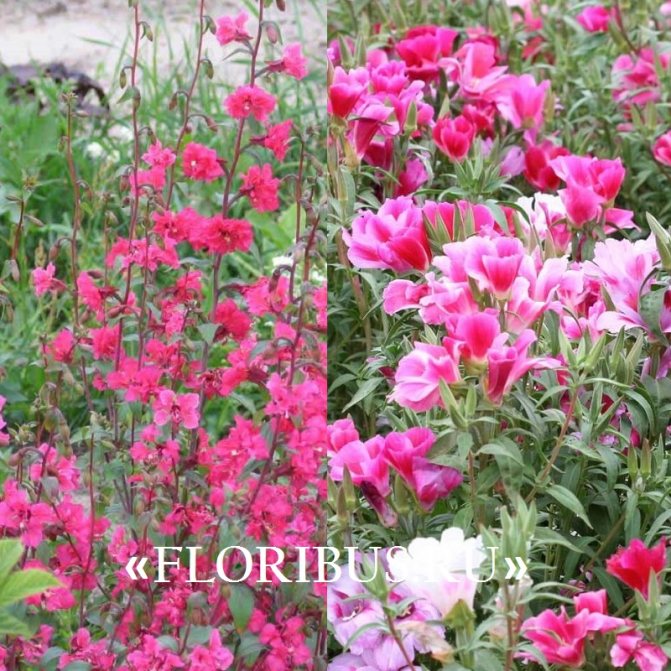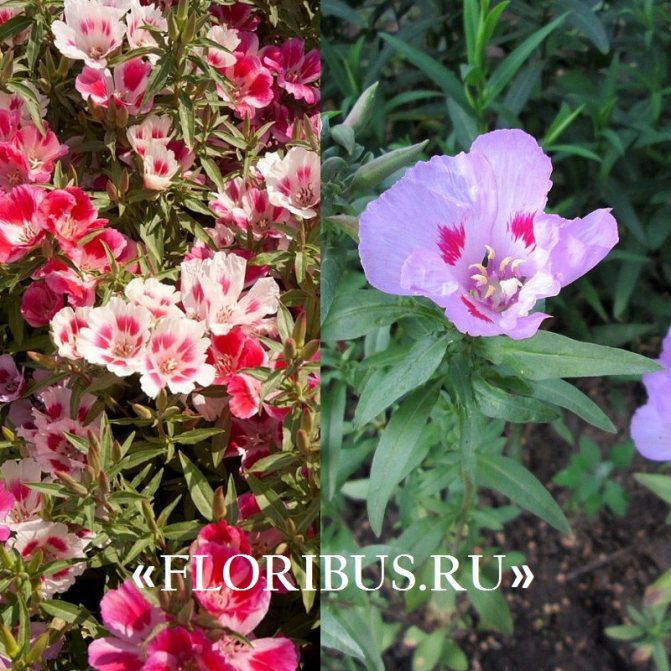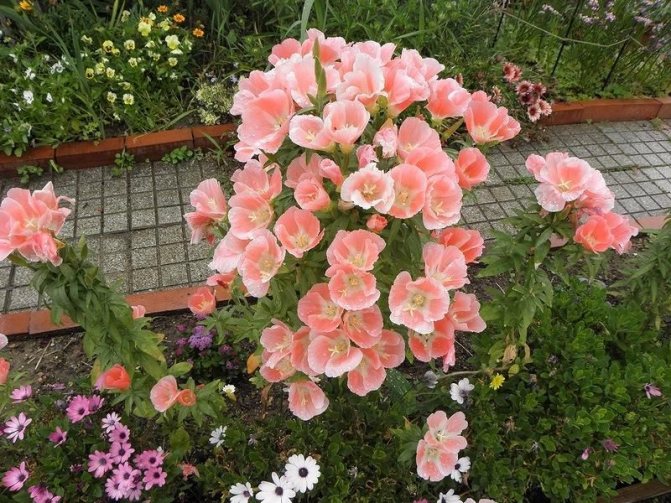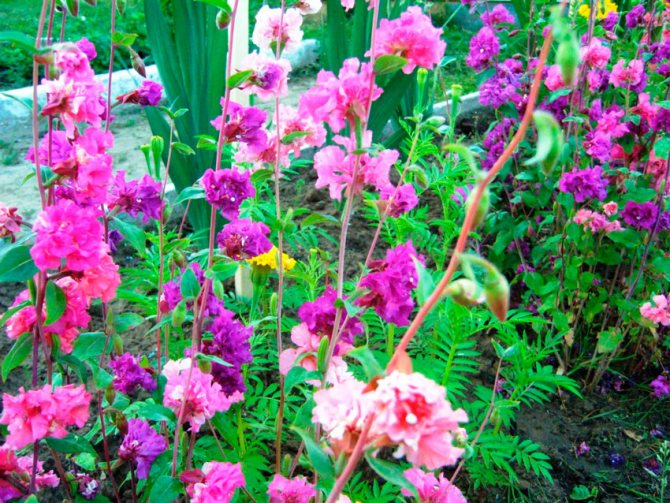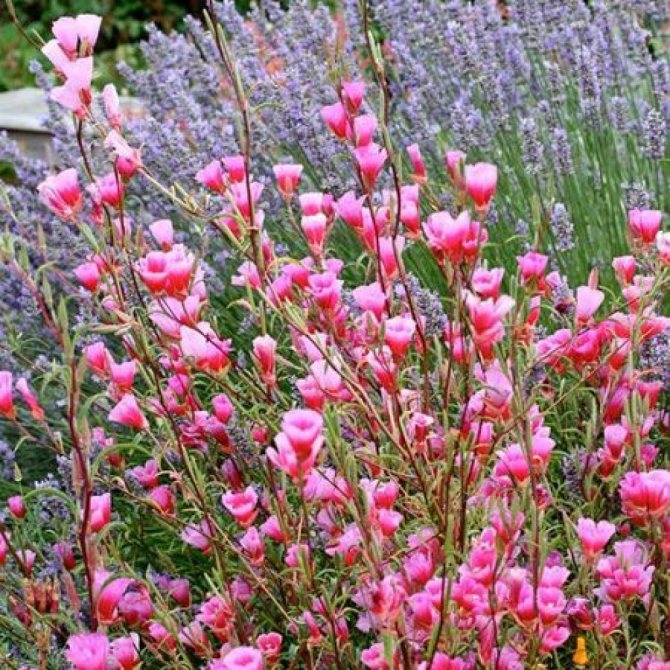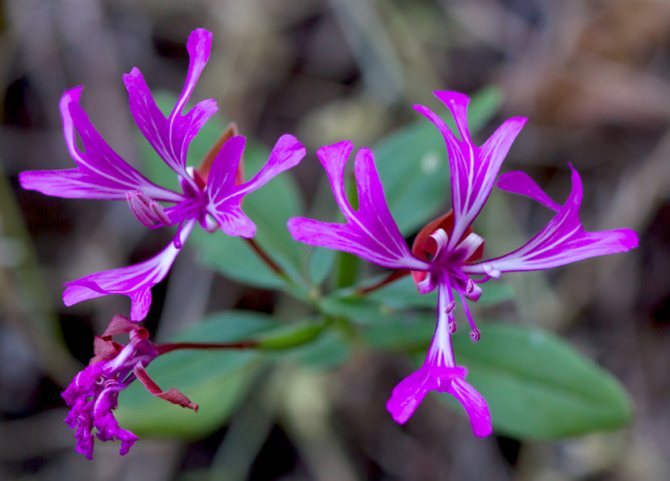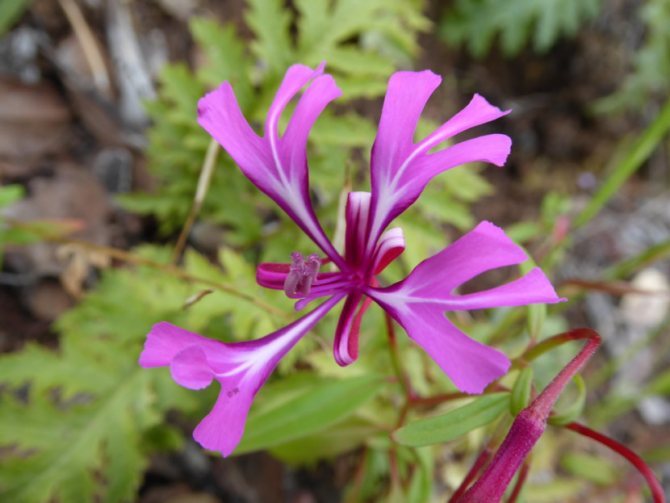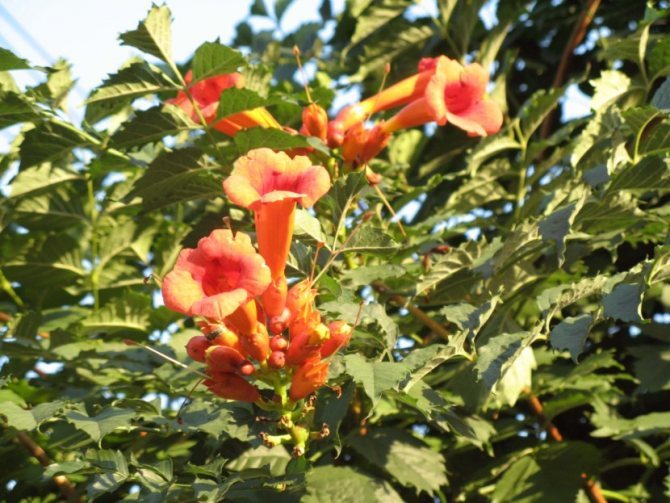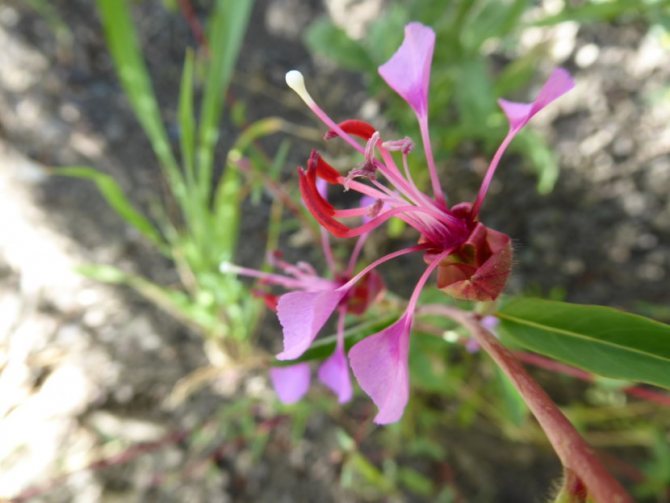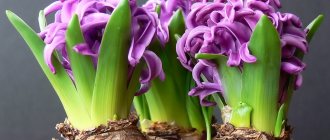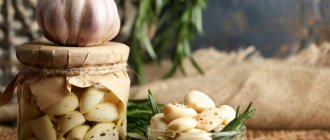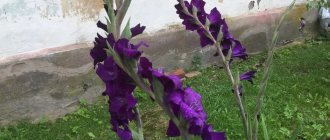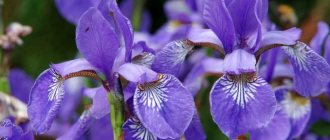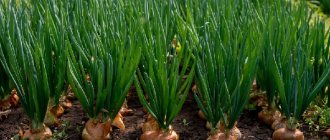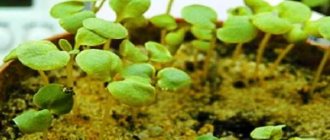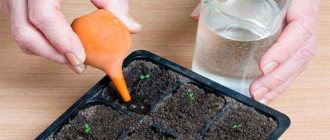Clarkia graceful is an annual that is very popular among gardeners due to its high decorative effect. This plant is very unpretentious, it gets along well with neighbors in the flowerbed, such as roses, asters or phlox, and is perfect for cutting. Another plus: the cultivation of graceful clarke from seeds can be carried out even by the most inexperienced plant breeder, this flower is so unassuming. Clarkia is a shrub with herbaceous stems up to 1 m high. Flowering, pink or white, collected in a raceme. The plant belongs to the Cyprus family. In the wild, it grows in Chile and in the west of the North American continent. It got its name in honor of the English explorer William Clark, who introduced the plant to culture.
Photo: <>
After flowering
Seed collection
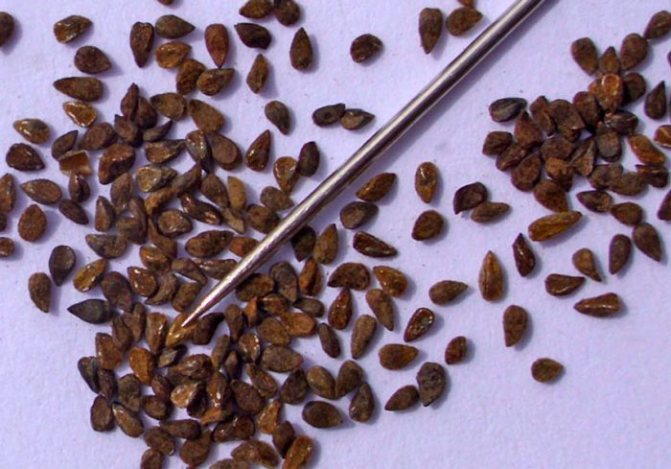
This plant is capable of multiplying without your participation by self-seeding. In springtime, you only need to carefully thin out the seedlings. If you need seeds, they can be collected very easily. When the plants are in bloom, you will need to mark the most spectacular flowers. When they begin to fade, then you will need to put on gauze bags on them. The seeds will mature 4 weeks after the flower withers, and the color of the capsule should turn brown. Cut the pods and sprinkle the seeds onto a newspaper. These seeds can be sown before winter or poured into a paper bag, where they will be stored until the next spring.
Wintering
When the flowering of the clarke ends, the bushes, if desired, can be cut to the surface of the soil. And during the autumn digging of the site, it will be necessary to remove the remains of plants and burn them. It is not recommended to throw them away, as pathogenic microorganisms or fungi may appear in such plant residues.
Clarke's disembarkation and departure
Osteospermum choose an annual or perennial culture


When growing for seedlings, you need to take into account that Clarkia does not like transplants very much, and withstands this procedure only at a very young age.
If you wish, you can grow a magnificent clarke in your own garden. She will need to organize such growing conditions that will be as close to natural as possible.
The most preferable place is in the open sun, and the soil should be dry, loose, not too fertile and slightly acidic.
On wet and heavy soil, the culture will not be able to develop fully due to the defeat of the roots by fungal diseases, which are characteristic precisely under such conditions. A lack of bright light will result in an increase in green mass at the expense of the number of colors. In accordance with this, a preliminary introduction into the soil of peat, humus and mineral fertilizers in the form of potassium sulfate and superphosphate (1 tablespoon per 1 square meter) may be necessary.
The plant belongs to cold-resistant annuals. Seeds normally relate to low temperatures, so you can plant them both in seedlings in boxes and directly in frosty ground.
To speed up flowering, the plant must be grown using seedlings. But do not forget that the flowers that were obtained from seeds from the garden are prone to better development, and their inflorescences are larger in size.
Growing from seeds
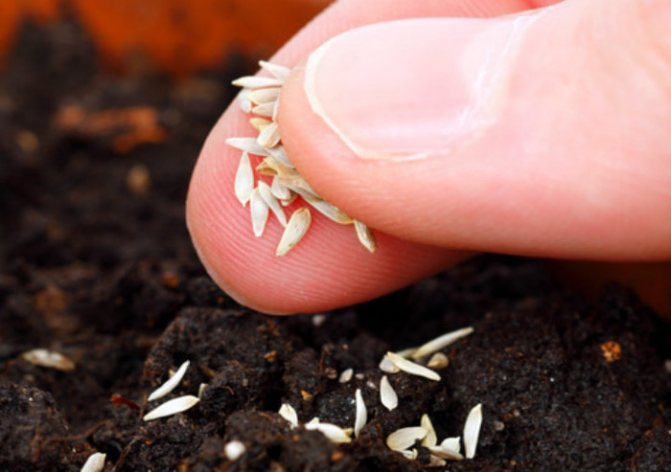

Clarkia seeds are very small, so they are not buried in the ground, but laid out on the surface, sprinkled with a very thin layer of substrate.
Sowing clarke in open ground begins from the beginning of May, in greenhouses - from mid-April. The culture emerges most effectively at a temperature of 15 degrees and at high air humidity.
Due to the very small size of the seeds (about 3500 pieces in one gram), they should not be buried in the ground, but laid out on the surface, tamped with a wooden spatula, or sprinkled with a small volume of substrate.
It is most convenient to plant seeds on a bed in nests (4-5 pieces each), keeping a certain distance between them. In the case of using the seedling method, flowers must be dived, placing 3-4 seedlings in a container.
The pick is carried out as quickly as possible due to the fact that the plant safely accepts the transplant only while it is young. It is more appropriate to keep the seeds from the most beautiful, lush and brightly colored bushes.
If clarkia with a different color grows near the plant, the seeds of which you plan to use in the future, then cross-pollination is possible.
As a result, the seeds may lose the hue of the mother bush. Therefore, it is advisable to isolate the seed clarke from other members of its species.
Care features:
- Flowers need to be weeded and loosened periodically.
- Watering should be carried out as necessary, while controlling the condition of the soil layer in order to avoid stagnant water and excessive moisture.
- For rich flowering, the use of mineral fertilizers is recommended every 14 days, but the use of organic fertilizing is not desirable.
- For abundant tillering, young bushes need to be pinched at a height of 10-15 cm.
- In the center of a group of high grades, the installation of a support will not interfere.
- To extend the flowering period and give the garden a well-groomed appearance, you need to regularly remove wilted inflorescences. The only exceptions are those plants from which the harvesting of seeds will be made.
- For faster ripening, you can pinch the top of the flowering shoots.
Bright flowering, unpretentious care, ease of reproduction contribute to the popularity of the plant in ornamental gardening. The clarkia flower grown since the beginning of the 19th century, both then and today, looks luxurious on a flower bed or rabatka. It can be grown in a special container or pot, on a balcony or terrace. In addition, the crop is excellent for cutting. Gradually opening the buds, clarkia will stand in the water for at least ten days.
Clarkia is an elegant mixture of color varieties in the photo
Fatshedera home care and transplant
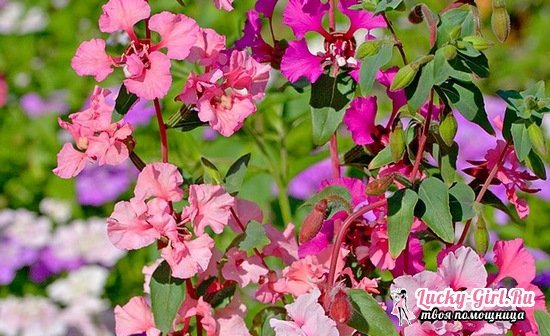

Fluffy flowers, made in pink-lilac tones, strewn with tall (up to 1 m) bushes, belong to the graceful clarkia - this is the most famous species of this plant in floriculture, from which more than 10 varieties have already been bred. Most of them have medium-sized flowers up to 3-4 cm in diameter, whose petals are painted in white, pink or purple tones. Coral and salmon shades are slightly less common, and not so long ago, breeders managed to breed a mixed variety in which it is difficult to guess the dominant color.
It got the name Bouquetmixed and outwardly resembles hyacinths in the shape of the inflorescences: the same fluffy terry hemispheres sitting along the entire height of the stem almost opposite each other. The petals in it are painted in shades of pink and white, which allows you to create an incredibly harmonious flower bed from a single clarkia variety or set off other flowers with this gentle stretch of shades.
Of the more traditional varieties of clarkia, graceful attention deserves Apple Blossom, which, contrary to its name, is famous for its peachy pink petals, as well as Gloriosa, which strikes with bright scarlet flowers sitting on stems alone, and not in inflorescences, as can be seen in most varieties of graceful clarkia ... But the most famous variety of this color is Brilliant, which has a cold pink color.
Popular varieties
Gypsophila perennial: creeping, graceful
Clarkia's color allows landscape designers to experiment with color combinations. Lilac, deep pink, salmon and coral specimens allow you to create a pink flower garden in different shades.Monochrome compositions are no less effective. A flowerbed made entirely of white flowers invariably attracts attention.
Common varieties of Clarkia graceful:
- Albatross with pure white petals looks especially impressive in the evening or early morning;
- Purpurkenig is a variety with richly colored double flowers. The purple flowers contrast with the green foliage, bringing expression to the floral arrangement;
- Salmon perfection is distinguished by pink double flowers. The bush is large, 80-90 cm in height;
- Sun. This variety has double salmon-colored single flowers. Plant height up to 70 cm;
- Orange is a low half-meter plant. It has double flowers of an impressive orange color.
Clarkia graceful
Eschsholzia
Decorative clarkia is a bush 30-90 cm in size, topped with double or simple inflorescences that look like roses of white, pink-red, lilac, lilac, orange. The buds are monochromatic or two-colored with different blotches. Clarkia is often confused with godetia, considering that these are two names of the same flower. These are various plants belonging to the fireweed family. Clarkia and godetia are the main differences:
- Flower size: in godetia, corollas are larger and catchy - 5-10 cm in diameter, clarkia flowers reach a size of 2.5-3 cm.
- Godetia blooms longer than clarke, tolerates picks better.
Varietal varieties
Like many other ornamental plants, the clarkia flower is represented by a huge variety of varieties with petals of all kinds of shades. We will consider only the most popular types of culture and describe the varietal characteristics of each of them, so that you can create an original color composition for your own garden (Figure 2).
Popular varieties of graceful clarkia include:
- Terry: a relatively low variety, the height of the shoots of which rarely exceeds 65 cm. The bush is quite branched, covered with dark green leaves. During the flowering period, buds bloom on the branches 5-6 cm in diameter, with double petals. The shade of the inflorescences can range from white to deep red.
- "Fantasy": this annual plant with lush inflorescences is highly decorative. The length of the shoots can reach 75 cm, and during the flowering period they are abundantly covered with relatively large double inflorescences. A distinctive feature of the variety is the variety of petal colors. In addition, this subspecies can be used not only in group and single plantings, but also for cutting.
- Clarkia is pretty: a very unusual variety, which differs from others in its short stature and original shape of inflorescences. Plant height is 20-40 cm, leaves are thin and pointed, and flowers can be double and simple. The variety is also distinguished by an early onset of flowering: the first buds bloom 2-3 weeks earlier than representatives of other subspecies.
- "Joy": a densely branched variety with a shoot height of 40-60 cm. A distinctive feature is that flowering begins already two months after sowing the seeds. The petals can be of different colors: from deep pink to crimson.


Figure 2. The best varieties of culture: 1- Terry, 2 - Fantasy, 3 - Pretty, 4 - Joy
Each of these varieties is good on its own, but the flower bed will look much more spectacular if you combine several types of clarkia at once. In addition, many of the described subspecies served as the basis for creating hybrids, which are also highly decorative.
Seed planting and grooming during the summer
Clarke seed germination under normal conditions lasts for four years.


There are several sowing formats of this flower - for seedlings, in open ground with spring planting or autumn "before winter".The flower loves warmth, but at the same time the crops tolerate winter well, and therefore the sowing time is chosen depending on convenience.
- Landing before winter. Performed at the end of October in dry, calm weather. On the site, grooves are made at a distance of about twenty centimeters, where the seeds are laid out in four pieces, also at an interval of twenty centimeters, so that bushes form during germination. You can also plant a solid carpet, but then thinning will be required. Crops are covered with a layer of sand and additionally mulched. Watering during autumn planting is not performed.
- Spring landing. If you do not want to risk planting flowers in the fall, you need to stratify the seeds. To do this, they are immersed in wet sand and stored throughout the winter in the main area of the refrigerator or on the balcony, where the air temperature is stable at about five degrees Celsius. Clarkia seeds are sown in open ground at the end of April, similar to the autumn planting, but with subsequent drip irrigation and without shelter with mulch. In general, the soil covering the seeds should be small to facilitate germination.
The emergence of seedlings with spring sowing should be expected within two weeks. If a continuous planting was performed, after the formation of the first full-fledged leaves, the clarke is thinned out, leaving small groups at a distance of up to twenty-five centimeters. In the phase of formation of five true leaves, the shoots must be pinched.


Seedling planting is rarely performed if, for example, you need to achieve early flowering, you plan to plant for growing on the balcony or special landscape decoration. You can sow in March, but always with supplementary lighting of seedlings with phytolamps. This will allow you to achieve flowering at the very beginning of summer.
Sow into shallow containers in moist soil and press lightly with a plank. Next, cover with a thin layer of sand and a film with ventilation holes. Crops are opened daily and, if necessary, moistened from a spray bottle. After the emergence of seedlings, the film is removed, and in the phase of a fully opened pair of true leaves, they dive into peat cups. Transferred to a flower bed or balcony in May.
During the period of bud formation, clarke is fed with potash and phosphorus fertilizers.
Throughout the summer, wilted inflorescences and seed pods are removed, and only closer to autumn you can leave a few to collect your own seeds. By the way, if you plan to prepare seeds yourself, various varieties of clarkia must be removed so that they do not accidentally get dusty and retain varietal characteristics.
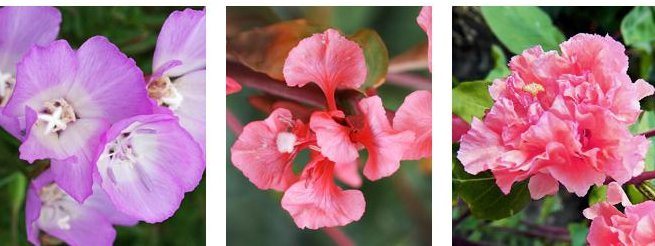

In addition to flower beds, Clarkia graceful is very well preserved in bouquets and is used in decorative design in combination with Chinese carnations.
The main pest that infects this flower is the mealybug, which can be fought by spraying with insecticides.
In autumn, at the end of flowering, the site can be cleared of plants, fertilizing and a new planting "before winter".
What else to grow from seeds:
In the garden:
- Decorative Coleus
- Outlandish Salpiglossis
- Perennial Carnation Shabo
- Abundantly blooming Aubrietu
- The Heliotrope Turning Following the Sun
In room:
- Eustoma with lush flowers
- Home Cyclamen
- Balcony Verbena
- Waller's Universal Balsam
- Ampel Bacopa
Care features
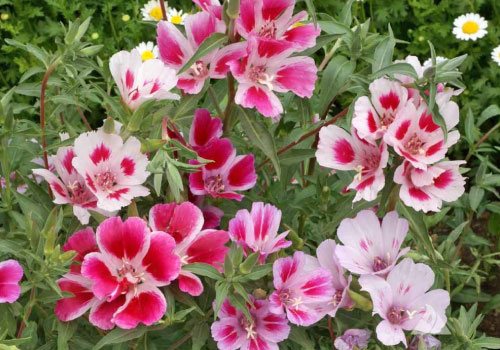

It is relatively easy to grow clarkia, and even a beginner can easily cope with this task. Watering should be done only when there is a prolonged dry hot period. In this case, watering should be done only a couple of times every 7 days. At other times, rainwater will be enough for such flowers. When watering, it should be borne in mind that the liquid should be quickly absorbed into the soil, and not stand for a long time around the bush. Top dressing should be done only during the period of bud formation and flowering, and a complex mineral fertilizer is recommended for this.The frequency of dressing is 1 time per half month. From fertilizers, it is recommended to use Rainbow or Kemira, while organic matter cannot be introduced into the soil. In order for the flowering to be long and lush, it is necessary to remove the fading flowers in a timely manner.
Diseases and pests
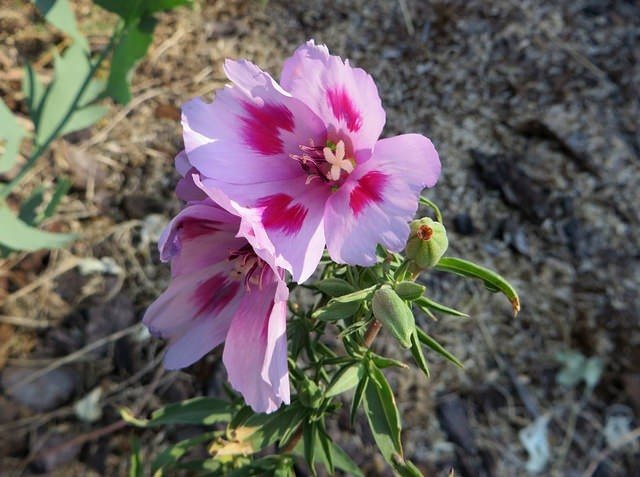

From harmful insects, mealybugs can settle on clarkia. You can understand that the bush is infected with this pest by the presence of a waxy, cotton-like bloom, which may be on the aerial part of the plant. To destroy this insect, it is recommended to process it with confidor, aktara or phytoverm.
In the event that in the area where clarkia grows, the soil is loamy, this can contribute to the development of a fungal disease. The fact that the bush is infected can be understood by the specks of a rusty-yellowish color, which have a brown border, which are placed on the leaf plates. To get rid of this disease, you should treat the bush with a fungicidal agent (oxych or Bordeaux liquid). If you plant this flower in a suitable soil and properly care for it, then it will have a very high resistance to both diseases and harmful insects.
Diseases and pests
Despite its endurance, Clarkia graceful is susceptible to attack by pests and diseases along with other garden plants. To prevent the death of the flower and infection of other inhabitants of the flower bed, it is important to recognize the problem in time and take appropriate measures. Clarkia Diseases: With improper care, specks and fluffy, mold-like growths appear on the leaves of the plant. This indicates the defeat of the flower by the fungus. In such a case, it is necessary to treat it with a fungicide, adhering to the dose indicated in the instructions. It also makes sense to adjust the watering, protecting the plant and the soil under it from moisture stagnation.
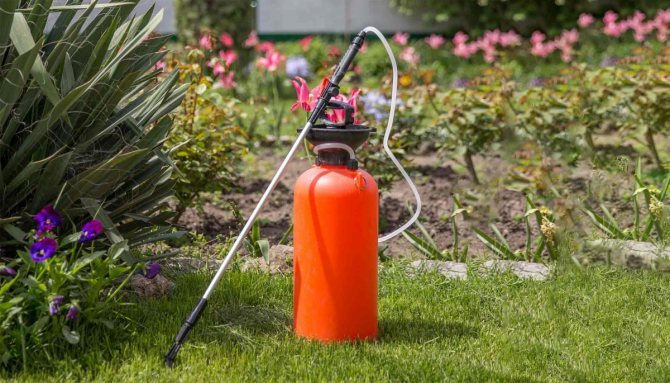

Photo: <>
If root rot occurs, fungicide treatments and adjusting the frequency of watering can also help. It will also be useful to trim the affected parts. However, if Clarkia has suffered too much from the disease, it will be easier and more convenient to remove it completely and grow a new young flower. Similar measures should be taken when downy mildew appears, which manifests itself in the form of dark spots on the underside of the leaves, which causes them to curl and fall off. The cause of this disease is also waterlogging of the soil. Ginger spots on the leaves, called rust, can occur when clarkia is grown in loamy soil. The culprit for the appearance of these spots is a fungus that attacks the plant with an excess of nitrogen or stagnation of moisture in the soil. As a therapeutic measure, treatment of the plant with Bordeaux liquid, carried out twice a week, is suitable.
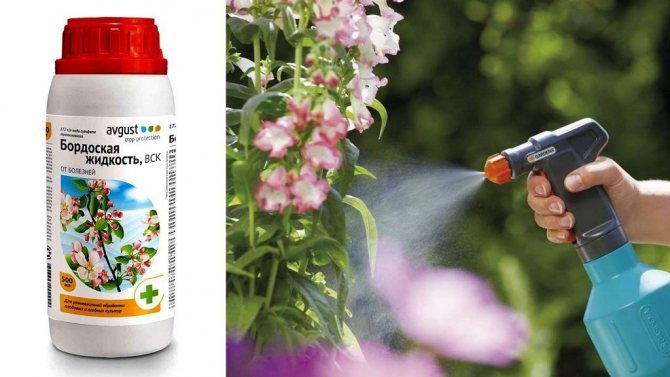

Photo: collage <>
Clarkia pests: Often the flower infects the mealybug, the most effective remedy in the fight against which is the treatment of the plant with insecticides. If this measure does not help, the infected bush must be destroyed. Much less often, aphids attack clarkia; the method of dealing with it is identical to that used in the case of mealybugs. If you don't want to use chemicals, you can try sprinkling citrus fruit peels with an infusion. Garlic infusion also helps out well. For its preparation, 4 cloves of garlic are chopped and poured with 1 liter of boiling water. After the liquid is infused for about 4 hours, it is filtered and used as directed. However, this product can cause burns on the leaves. Sciarid larvae, she is also a flower midge, often infect the roots of clarkia, growing on caked and waterlogged soils. In addition to insecticides, garlic infusion spread out in the root zone of the citrus peel will help fight them. You can also stick a few matches in the ground and water it. When the sulfur dissolves, the procedure is repeated.Experts recommend fighting the parasite by watering with soapy water or pale pink - potassium permanganate. As a preventive measure, frequent loosening of the soil under the flower is carried out.
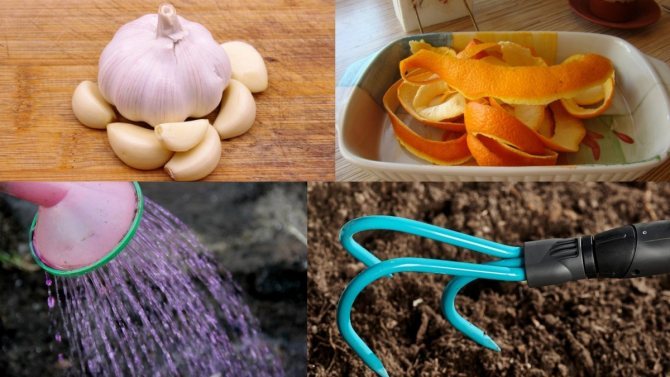

Photo: collage <>
Natural growth conditions
If you decide to certainly grow this flower in your garden, you should know that this beauty is quite capricious. She loves plenty of light, fresh air and light soil with good drainage properties. Clarkia is not demanding for the nutritional value of the soil, and therefore on the site you can safely mix garden soil with river or quartz sand.
In terms of acidity, slightly acidic soils are preferable, and therefore you can not be afraid to fertilize with peat.


Oily, clayey and heavy soil is destructive for this flower. If there is such soil on the site, you can plant clarkia in flowerpots and containers or completely replace the soil in a flower bed. To do this, in the fall, they dig a planting hole about one meter deep and fill it with soil of a suitable composition, so that a high embankment is formed on the surface. By spring, under the influence of precipitation, it will settle and the site will become equal.


Clarkia graceful is planted in open places away from large and shady trees like walnuts, since it is not afraid of direct sunlight. But at the same time, she needs moisture and daily watering in the early morning and late evening on hot days.
Clarkia in landscape design
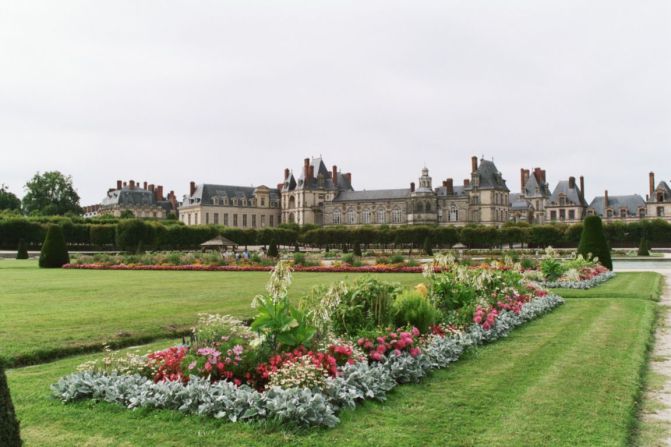

It is really difficult to find a more suitable flower for decorating gardens, parks, walls of various structures than clarkia. The reasons why this flower has gained a strong position in landscape design is that it is unpretentious, has gorgeous colorful flowers that appear in abundance and bloom for a long time. In addition, the flowers give off a pleasant scent.
Clarkia can be planted alongside other flowers such as roses or irises. Also, beautiful combinations are obtained if you alternate flower beds with clarke with beds of asters or zinnias.
Since the sizes of different types of plants are different, this can be used to create multi-level landscaping. For example, clarkia breveri is a great flower to plant in a pot, which can be placed in a variety of places in the garden, and can also be used to decorate terraces and balconies.
Types and varieties of clarkia with photos and names
Gardeners cultivate only three types of clarkia, namely: clarkia marigold, or graceful clarkia; clarkia is pretty, or clarke is pubescent; Clarkia Breveri.
Clarkia graceful, or marigold (Clarkia unguiculata, Clarkia elegans)
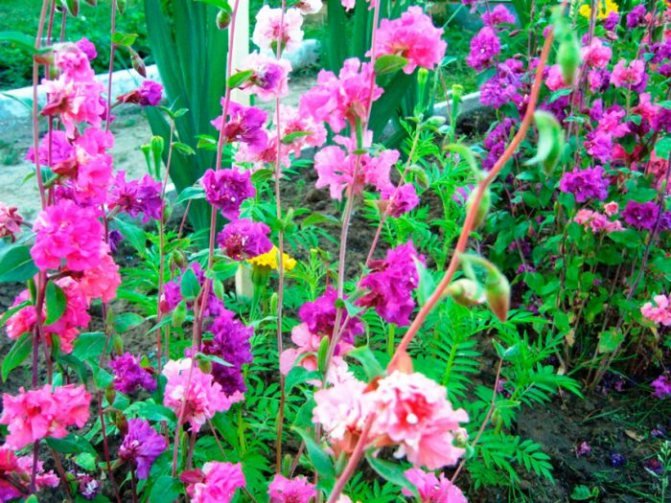

This species can be found in nature in California. A branchy, lush annual plant in height can reach 100 centimeters. Thin enough powerful shoots are lignified from below. On the surface of oval greenish-gray leaf plates there are red veins, their edge is unevenly sparsely toothed. The flowers are regular in shape and four centimeters in diameter. They can be double or simple and have different colors: red, pink, white, purple and blue. They are placed one at a time in the leaf sinuses. Small seeds germinate for about 4 years. It blooms luxuriantly in July – September. This species is often grown in mid-latitudes. The most popular varieties are:
- Albatross. Double flowers are white. A branchy bush reaches a height of about 0.75 m.
- Purpurkenig. Double flowers have a carmine color and a diameter of 35 to 40 mm. The bush reaches a height of 0.8 to 0.9 m.
- Salmon perfection. The double flowers are salmon pink and about 35 mm in diameter. The height of a loose bush is about 0.9 m.
Clarkia pulchella


This species is dwarf. Erect, branched shoots can reach a height of 0.4 m. Long, narrow, whole leaf plates are green in color.They sharpen towards the top, and narrow towards the petiole. Flowers can be double or simple. They can be located either singly or be collected in small groups in the leaf axils in the upper part of the stems. Of particular interest is the shape of the petals, which are divided into 3 lobes, spaced quite widely. In this regard, in America, this species is also called "moose horns". Flowering begins half a month earlier than graceful clarkia.
Clarkia breweri


Recently, this species has become increasingly popular with gardeners. This annual cold-resistant plant can reach a height of up to half a meter. The shape of the flower is similar to a butterfly, and in diameter it reaches about 30 mm. The flowers have a pleasant strong smell and are part of loose inflorescences. The Pink Ribbons variety has pink flowers with ribbon-like petals, the bush can reach a height of about 0.3 m. The shoots of this variety are branched, and it blooms very luxuriantly.
Other types of clarkia grown by gardeners are actually godetia.
Clarkia graceful growing and grooming techniques
If it is necessary to transfer clarke seedlings to open ground, this is done towards the end of May, just before its flowering. If the plant is grown on the balcony, it can be taken out into the street already in the 3rd week, so that it gradually gets used to the natural conditions. Clarkia graceful is quite cold-resistant, therefore, even in Siberia and the Far Eastern District, April-May will not be disastrous for it, it will not affect further flowering in any way.
The very growing season of the graceful clarke falls at the end of June and lasts until September inclusive. How abundantly the fluffy flowers will cover the bush depends on the conditions in which the clarkia is placed. The less light she receives, the smaller her flowers will be, but the more active her greens will be. But the plant loves areas with direct sunlight, and even if the summer turns out to be hot, with practically no rain, the flowering of clarkia will remain just as abundant. She is experiencing drought well, which can not be said about excessive moisture - for this reason, gardeners do not recommend zealous watering of clarkia.
If the flowering intensity still seems insufficient to you, you can carry out a light pruning of the bushes, eliminating the threat of their further growth. You should also remove wilting flowers in a timely manner, if it is not decided to save them for the ripening of the seed pods. However, it is much more important to prevent stagnation of water in the soil, which can even lead to fungus of the root system and ruin the bush. Occasionally, the moistened soil needs to be constantly loosened, but it is better to refuse from frequent feeding, so as not to oversaturate the substrate with useful substances. Only mineral fertilizer applied during the flowering period 1-2 times a month is of value here, but organic matter must be abandoned.
Tall bushes, which prevail among the whole variety of varieties of Clarkia graceful, require additional support in the form of thin wooden slats. Since the stems of the plant do not have antennae, they often have to be tied up.
This is especially important for bushes with abundant flowering, since up to 40-45 heavy flowers can simultaneously bloom on the stem, pulling it down. Or you can place the clarke near the wall of the house or gazebo, but it must necessarily be a sunny, well-warming side, otherwise the bush may not even bloom
Growing clarke graceful in a summer cottage is a fairly simple process due to the unpretentiousness of the plant. For this reason, it can be found in almost every garden as a resident of rabatki, flower beds and lawns. And if you want to extend the life of the graceful clarke, it is better to immediately sow the flower in boxes and place it on an open balcony in order to carry it into the room for the winter and give it the opportunity to wait out the cold in the warmth.
Read other interesting rubrics
Clarkia flower
Hello dear friends!
If you have not tried to grow clarkia in your backyard or garden plot, then I advise you to definitely do this, since the annual clarkia flower is a very graceful plant, characterized by long flowering - from late July to September. Clarkia flowers, located directly on the stem, are very showy. They can be both simple and double and semi-double, somewhat reminiscent of small roses. The color of the flowers is very diverse: lilac, red, lilac, pink, white.
The stems of the plant are highly branched and reach a length of 30 to 90 centimeters. The leaves of the plant are dark green or green-gray.
These flowers are grown in flower beds, in group plantings, in flower beds (when growing tall clarke, you need to stick strong supports in the middle of the flowers to support the stems). Low-growing clarkies can be grown on balconies or loggias.
Clarkia is a very fragrant plant, she is a wonderful honey plant. Cut plants stand in water for a long time, with cut leaves.
Clarkia cultivation and plant care
Clarkia flower is not picky about soils, but in the presence of loose, slightly acidic soils well permeable to moisture, it grows and develops much better. Before planting or sowing seeds for one square. meter, peat is introduced into the soil - 3 - 5 kilograms, humus - 2 - 3 kilograms, one st. spoon of superphosphate and potassium sulfate.
Reproduction
Basically, clarkia is propagated by sowing seeds directly into open ground. Sowing begins in the first week of May, after which the sowing site is covered with covering material. When shoots appear on days 10 - 12, they are thinned out. At the same time, 15 - 20 centimeters are left between the plants. If you want to get more compact, squat bushes, then pinch the seedlings.
Care
Clarke is watered once or twice a week. In very hot weather and during the period of violent flowering, it is necessary to water only at the root.
Top dressing
During the growing season, it will be enough to carry out two dressings: the first - before the formation of buds, and the second - at the beginning of flowering. Both of these dressings are made with the same composition. (one tablespoon of nitrophosphate and one tablespoon of Effekton-Ts organic fertilizer per ten liters of water).
Varieties
The most widespread among our gardeners are two types of clarkia
"Clarkia marigold (graceful)" - has its own subspecies
- Albatross - pure white flowers
- "Glariosa" - scarlet flowers
- "Pink" - pale pink flowers
- "Sharlakhovaya" - red double flowers)
- "Dorothy" - pink flowers
Clarkia is beautiful - flowers are both simple and double, with the same color set as that of graceful clarkia.
P.S. Clarkia flower comes from California. At one time, an English priest named Clark brought the plant to Europe. This is where the current name of this wonderful flower comes from.
See you, dear friends!
Suitable soil
Despite the fact that Clarkia graceful is considered an unpretentious annual, lush and abundant flowering will be possible only if certain rules of agricultural technology are observed. They concern not only planting and caring for the crop, but also the selection of soil for its cultivation.
Usually the culture is grown on any garden soil, but clarkia develops best on loose, fertile soil of medium and low density. Theoretically, it is possible to plant a flower in clay soil, but in this case the seedlings will develop more slowly, and the flowering will not be plentiful.
Experienced gardeners prefer to prepare the soil for the crop separately. To do this, mix ordinary seedling soil with humus, peat and sand in equal proportions. To exclude infection with diseases, it is advisable to ignite the mixture in the oven or steam in a water bath.
Growing clarke from seeds
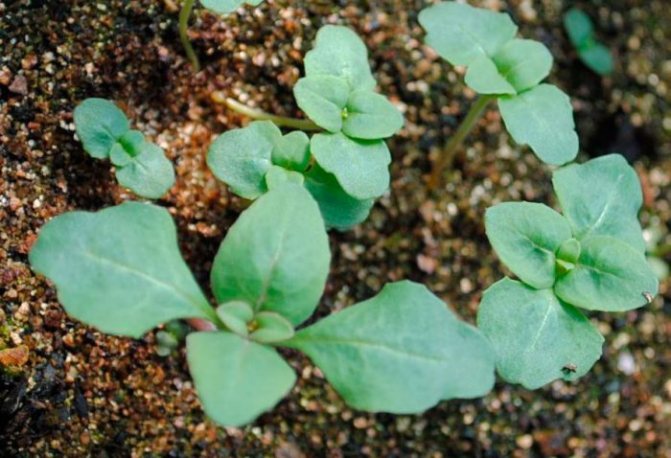

Sowing
Such a plant is grown from seeds in two ways: seedless and through seedlings.If the cultivation is carried out in a seedless way, then the seeds are sown directly into open soil. Sowing is carried out in April or in the first days of May, it can also be done in late autumn before winter. When preparing a site for sowing, for every 1 square meter for digging, 1 kilogram of peat and 1 large spoon of superphosphate and potassium sulfate must be added. The seeds of the plant are small enough, they are sown in nests of 4 or 5 pieces. In this case, the distance between the nests should be from 20 to 40 centimeters. It is not necessary to deepen the seeds into the soil; they should only be pressed down a little and sprinkled with a thin layer of soil. The first seedlings may appear after half a month, and you will need to thin them out, but you should take into account that during flowering clarkia looks much more impressive in a dense bush. If the sowing was carried out in the fall, then sometimes the seedlings also have time to appear before winter comes, while they are well preserved under the snow cover. When shoots appear in the spring, they will have to be thinned out like a carrot.
Growing through seedlings


If clarkia is grown through seedlings, then young seedlings will be reliably protected from cold rains, frosts, sudden changes in temperature and strong winds. It is recommended to sow seeds in March, in this case flowering at clarkia will begin in the first days of June. Seeds are sown in a slightly acidic substrate. It is unnecessary to deepen them, but you should only press down with a plate and pour from a spray bottle. Cover the container with glass and put it in a warm and lighted place, but there should be no direct rays of the sun there. After the first seedlings appear, the shelter should be removed. The container should be kept in a dry, warm place with good ventilation at all times. The pick is done very early, after the appearance of the first true leaves.
Clarkia graceful seed cultivation
Sowing is the only way to grow clarke both in natural conditions, that is, North America, and in the middle lane with its unstable climate. In any region, clarkia is grown as an annual, and only in the south it is possible to extend its life to 2 years. However, this is not necessary: firstly, the plant blooms after 1.5-2 months. after sowing, and secondly, it is easy to sow it next year - she is not too capricious and lends itself even to a novice gardener
You can sow a plant even in open ground, however, given the harsh continental climate, some experts recommend taking precautions and sowing clarke in a greenhouse or apartment, wait until its seedlings get stronger, and only then transfer them to the site
If you grow Clarkia graceful right away in the garden, it is best to wait for relatively stable weather, when frosts have passed: in the south it is already the beginning of March, beyond the Urals it is likely that sowing will be postponed to mid-May. There have been cases of sowing clarke at the end of autumn, under the snow, but it is better to leave this prerogative to professionals. The place for the plant is selected well warming up, with thawed earth, which is easy to loosen. If necessary, add a little sand and drainage to the dug holes to make the substrate lighter. This is especially true for dense loams. It is good if the land is not too fertile - then the clarkia will bloom profusely, and not grow in breadth. Additionally, you can acidify it a little.
But by no means always clarkia is grown in the garden - it is often planted in containers and boxes that decorate the balcony, however, the flowers are smaller than usual. In this case, the plant is sown in mid-April for seedlings, in a traditional universal earthen mixture, devoid of humus in its composition. The seeds are barely covered with soil, after which the containers are tightened with a film to keep heat and moisture in them, and are placed closer to the window.Seedlings in containers and in an open area appear on the 10-12th day, however, under the film they can hatch even on the 7-8th day. Clarkia transplantation, due to the tap root system, does not favor it, it is loyal to it only in the seedling stage, therefore it is advisable to dive the seedlings already at 3-4 weeks of life. Moreover, it is better to group them in 2-3 pieces. to get lush bushes rather than lonely stems.
An important nuance that gardeners are advised to pay attention to is the sowing pattern of elegant clarke. If the bushes will dive out of the common containers, then in the open ground most often the initial planting becomes final
For this reason, 3-4 seeds are dropped into each hole. and the points of future bushes are spaced from each other at a distance of 30 cm. For highly growing varieties, this parameter can be increased to 45 cm. If the goal is not to create a dense partition of graceful clarkia bushes.
Description of the plant
The plant belongs to the fireweed family, their natural habitat is the west of the North American continent.
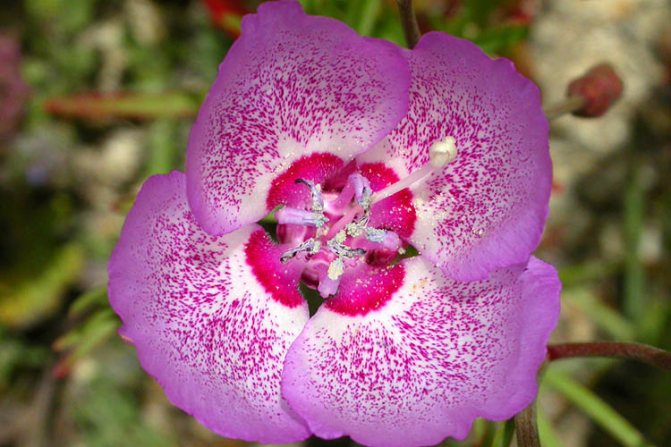

Clarks are distinguished by their brightness and variety of colors, they can be white, pink, orange, red, purple.
The flower acquired its name in honor of the American navigator William Clark, who was one of the initiators and leader of a research expedition to North America in the early 19th century. During this expedition, which lasted two years (from 1804 to 1806), numerous plants, including clarkia, were first recorded and described.
Clarkia height varies in the range of 35 - 150 cm. Its leaves are straight, but branched at the top and woody downwards. On the shortly pubescent stem, there are oblong (sparsely toothed or whole-edged) leaves, which are noticeably narrowed at the ends. The color of the leaves is predominantly intense green, often with pronounced red veins.
Clarkia flowers are regular in shape, up to 3.5 cm in diameter. As a rule, they have a tubular calyx and a four-petal corolla with wavy edges. In some of the plant species, the petals are dissected and resemble a trident. In the axils of the leaves, they open in several pieces.
Flowering begins 60 days after germination. It falls mainly in July and lasts 45 days. The fruits outwardly resemble elongated capsules with an impressive amount of the smallest brown seeds. The seeds are round, rough or ovoid. In ornamental annual varieties, their germination capacity lasts 2-4 years, and self-sowing is often carried out in gardens.
Brief description of clarkia
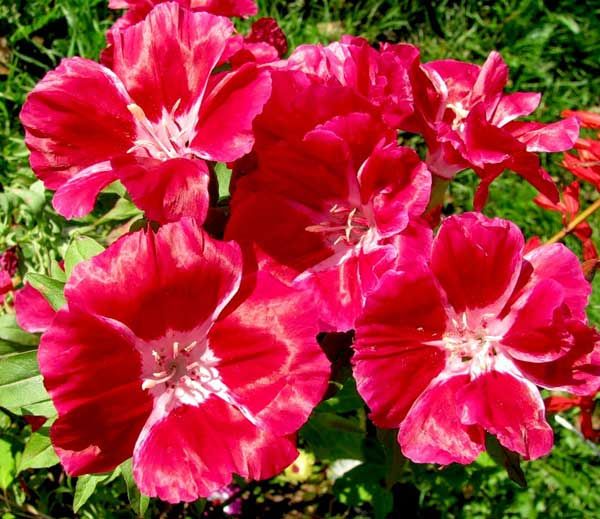

The flower is native to Chile and North America. It is an annual herb with a stem height of 30 to 90 cm, however, by the end of the growing season, the main shoot becomes partially lignified. The leaves on the flower are arranged alternately and are dark green in color. The flowers are medium-sized (3-4 cm in diameter), with a bright color palette.
The main requirement of clarkia for growing conditions is location in a sunny area. Otherwise, it is quite unpretentious: it easily tolerates spring frosts, it is not demanding on the nutritional value of the soil. Grows best in slightly acidic soils.
Clarkia bloom will come after 2 months from the sowing date and will last until frost. During the growing season, which takes about 5 months, the flowers have time to give full-fledged seeds. They can be harvested and used as seed for the next season.
For reference. Seeds collected from their site retain their varietal properties, which is of great importance for the gardener.
Transplanting clarke seedlings into open ground and caring for it


With the onset of warm days, clarke seedlings are transferred to open ground. A sunny place with moderately fertile soil and low acidity is the best option for growing clarkia.
When the main stem reaches 12-15 cm, it should be pinched, this will stimulate the plant to form new shoots. And also this procedure allows you to form a clarke bush to your liking and increases the number of flowers on it.
Caring for Clarkia outdoors will not be cumbersome.
- Moderate watering in the absence of rain.
- Loosening and weeding, which are necessary for every garden plant. Clarkia will not be an exception, unless the soil around the flowers is mulched.
For reference. Mulching the soil around the plants solves many problems. Mulch inhibits the growth of weeds and reduces the time and effort required for watering.
- Flowers are fed with mineral fertilizers 2-3 times per season. Nitrogen-containing - are excluded, because clarkia does not like excessive fat content of the soil.
- Removing wilted buds will prolong the freshness of the flowers. The plant will not waste energy on ripening the seeds, but will direct them to the formation of new buds.
But a few inflorescences need to be left if the gardener's plans include collecting their own seeds.
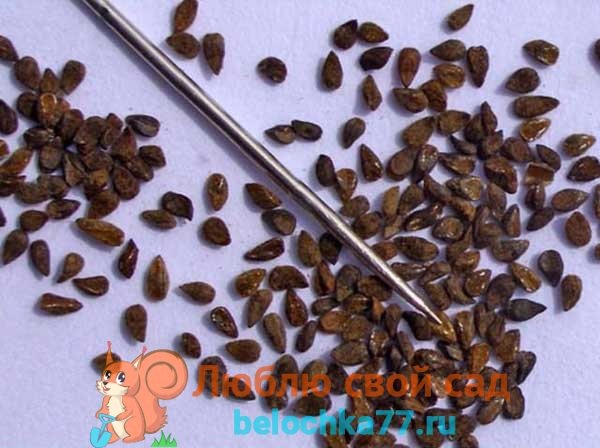

Clarkia reproduces well by self-seeding. If the wilted flower was not removed in time, then a seed capsule will form on it. It has an elongated shape and contains numerous and very small seeds. A seedling will take a month for the contents to mature. During this time, it will change color from green to brown.
After ripening, the capsule spontaneously opens and the so-called self-seeding occurs. In the spring of next year, there will be a dense carpet of seedlings at this place, which can be thinned out or transplanted for further cultivation.
But if it was decided to collect seeds, then the attracted inflorescences are noticed even at the flowering stage. When the flower withers, it is tied with a thin cotton cloth so that after ripening the seeds do not spill out into the soil. After a month, the testes are cut and dried, if necessary. The seeds are poured onto paper and packaged.
They can be used in the harvest year for winter sowing or left until spring. Clarkia remains viable for up to 4 years.


A beautiful plant with delicate flowers shows resistance to various types of diseases and is practically not exposed to pests.
In most cases, flower infection occurs through the carelessness of the gardener. The wrong choice of planting site and violation of irrigation norms are the main reasons for the defeat of clarke with fungal diseases.
Low-lying areas of the garden, where it is always wet and damp, are completely unsuitable for growing a flower. This microclimate is favorable for the development of fungal spores. First, the root system and the base of the stem are damaged. Reproducing, they inhabit the entire plant. A gray plaque appears on it, consisting of a cluster of spores.
It is best to destroy such a plant immediately, and treat the neighboring plants with fungicides. The place where the infected flower grew is also subject to processing. You can apply 1% Bordeaux liquid.
Excessive watering with stagnant water at the location of the roots entails such signs of the disease.
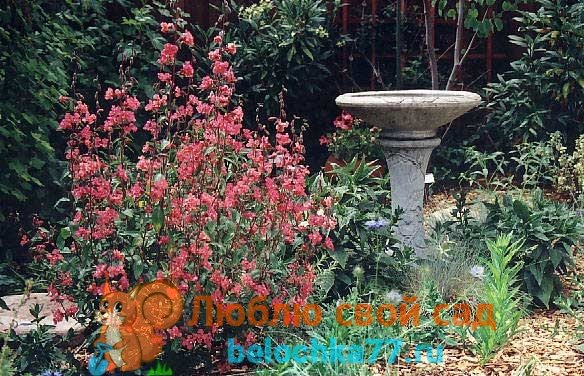

At the stage of development of sprouts in the open field, they can be attacked by a garden flea. The likelihood of a problem increases if the clarke plantings are located near vegetable beds. Jumping insects move from plant to plant, sucking sap from young leaves and stems. This inhibits seedlings and can lead to their death.
You can get rid of the garden flea with the help of the preparations Karbofos "and Fufanon".
Clarkia's more dangerous enemy is the mealybug. If a plaque resembling cotton balls is noticed on the aboveground part, then this is the work of a small worm that has built a cotton shelter for itself and imperceptibly harms the plant.
It is recommended to fight it with such means as Fitoverm, Aktara or Confidor.
Seed preparation for sowing
First you need to purchase high-quality seed in the store. Better yet, collect the seeds yourself.The seed capsule of clarkia has an oblong shape, the seeds are brown, small. They retain excellent germination for 4 years, subject to storage conditions. To exclude possible infection of seeds with diseases, before planting, they should be soaked in a weak solution of potassium permanganate for 2-3 hours, previously wrapped in gauze or other clean thin cloth. After that, they are laid out to dry on dry napkins or cloth. When the seeds are dry, you can start planting.



